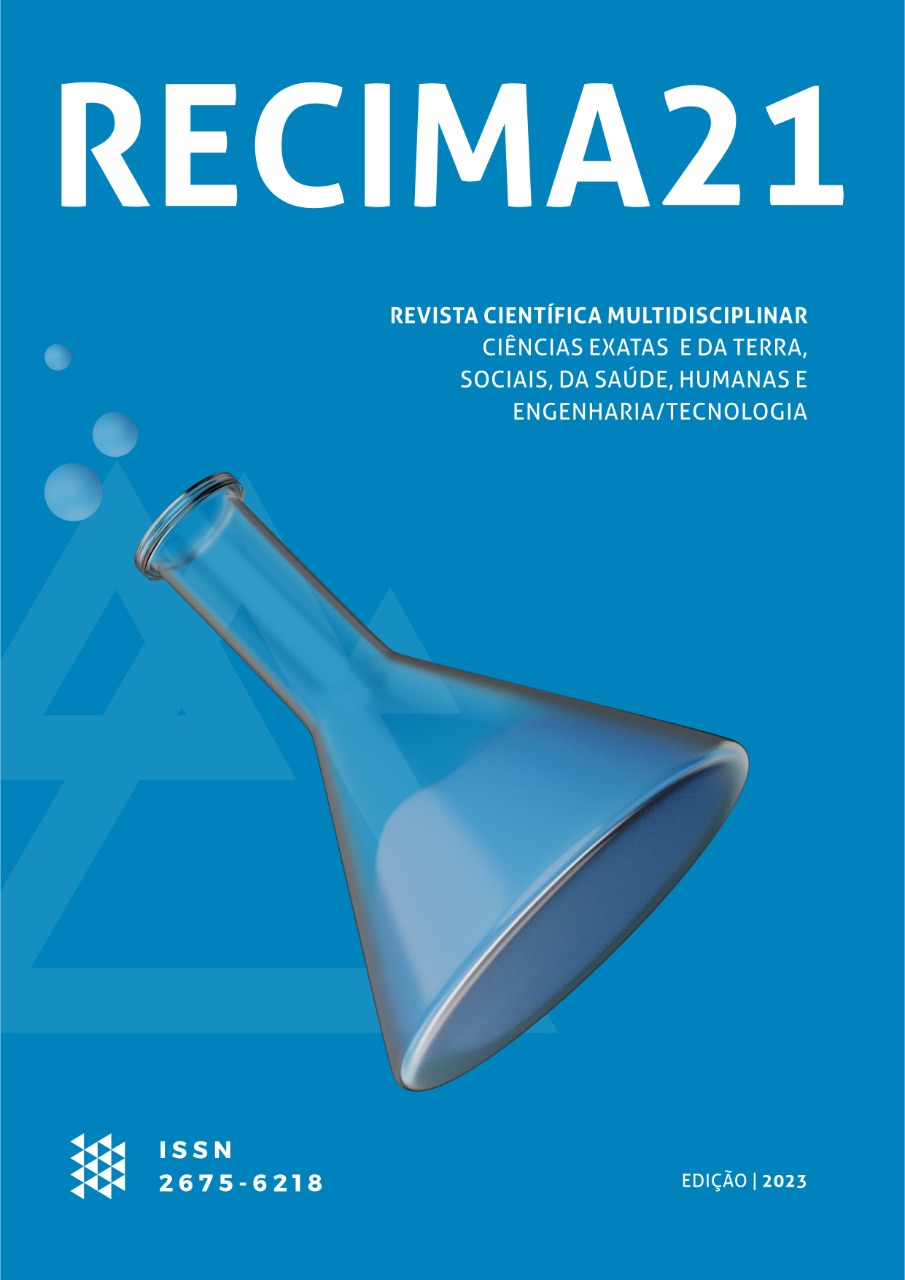STUDY OF POSSIBLE SYSTEMIC EFFECTS CAUSED BY HIGH DOSES OF IVERMECTIN IN AN ANIMAL MODEL OF WISTAR RATS
DOI:
https://doi.org/10.47820/recima21.v4i5.3081Keywords:
Self-medication and inappropriate prescribing are serious publicAbstract
Introduction: Self-medication and inappropriate prescribing are serious public health problems, creating health risks. Due to the coronavirus pandemic and COVID-19, there was an urgency to obtain therapeutics, although much speculation drove deleterious habits regarding the use of medications. Objective: To evaluate the possible systemic effects caused by different doses of Ivermectin. Methods: Using an animal model of Wistar rats, the animals were divided into 4 groups of 10 members, being treated orally with: i. saline (control - placebo); ii. Ivermectin suspension 300 µg/Kg/day; iii. Ivermectin suspension 500 µg/Kg/day; and iv. Ivermectin suspension 1000 µg/Kg/day. After the 6-week experiment, the rats were euthanized and serum samples collected, with liver (ALT and AST) and kidney (creatinine and urea) function tests performed, as well as histological evaluation of the liver, kidneys, heart, and salivary glands. Results: Treatments with Ivermectin doses up to 1000 µg/kg/day did not affect ALT and AST, creatinine and urea levels compared to the control-placebo group (p > 0.05), and such doses also did not cause morphological damage to the kidneys, heart and salivary glands. Only the dose of 1000 µg/kg/day promoted slight changes in liver morphology. Conclusions: Ivermectin doses up to 1000 µg/kg/day did not promote functional changes in the organs evaluated, except for the dose of 1000 µg/kg/day in the liver. Due to the limitations of the animal model adopted, further studies in different experimental models should be conducted to corroborate these preliminary findings, in order to clarify the possible safety of Ivermectin.
Downloads
References
Ahmad, HM., Abdel-Azim, E.S., Abdel-Azis, R.T., et al. 2016. Clinical efficacy and safety of topical versus oral Ivermectin in treatment of uncomplicated scabies. Dermatol. Ther, 29(1), 58-63.
Ashour, Dalia S. 2019. Ivermectin: from theory to clinical application. International Journal of Antimicrobial Agents, 54, 134-142.
Behera, P., Patro, B.K., Padhy, B.M., et al. a. 2021. Prophylactic role of Ivermectin in severe acute respiratory syndrome coronavirus 2 infection among healthcare workers. Cereus, 13(8), e16897.
Behera, P., Patro, B.K., Singh, A.K., et al. b. 2021. Role of Ivermectin in the prevention of SARS-CoV-2 infection among healthcare workers in India: a matched case-control study. Plos One, 16(2), e0247163.
Borges, V.M., Moura, F., Cerdeira, C.D., Barros, G.B.S. 2018. Uso de medicamentos entre gestantes de um município no sul de Minas Gerais, Brasil. Infarma, 30(1), 30-43.
Brito, A.R., Ravazi, G.F., Oliveira, A.P.P., Cerdeira, C.D., et al. 2019. Nitroxides Improve Biochemical Profiling and Prevent Injuries in the Organs of Type 1 Diabetic Rats. Rev Port Endocrinol Diabetes Metab, 14(2), 128-136.
Brunton, L.L., Chabner, B.A., Knollmann, B.C. 2017. As bases farmacológicas da terapêutica de Goodman e Gilman. 13 ed. Porto Alegre: AMGH.
Cruciani, M., Pati, I., Masiello, F., et al. 2021. Ivermectin for prophylaxis and treatment of COVID-19: A systematic review and meta-analysis. Diagnostics (Basel), 11(9), 1645.
Grimes, D.R. 2020. Health disinformation & Social Media. EMBO Reports, 21, e51819.
Juarez, M., Cabrera, A.S., Gonzalez, A.D. 2018. The multitargeted drug ivermectin: from an antiparasitic agent to a repositioned cancer drug. American Journal of Cancer Research, 8(2), 317-331.
Kerr, L., Cadegiani, F.B., Baldi, F., et al. 2022. Ivermectin prophylaxis used for COVID-19: a citywide, prospective, observational study of 223,128 subjects using propensity score matching. Cereus, 14(1), e21272.
Lima, V.S., Lima, M.S.G., Silva, G.C. 2020. Caracterização e fatores associados ao uso indiscriminado de medicamentos isentos de prescrição no Brasil. Revista Brasileira de Educação e Saúde, 10(3), 156-163.
Medeiros, J.P., Silva, R.R.S., Brito, L.P., et al. 2021. Aspectos toxicológicos da Ivermectina: um estudo dos efeitos na morfologia do fígado de ratas prenhas. Research, Society and Development, 10(1), e25410111693.
National Institutes of Health [NIH]. 2011. Guide for the Care and Use of Laboratory Animals, Washington DC: The National Academy Press.
Pedroso, L.A., Binda, N.S., Teixeira, M.C., et al. 2020. Aspectos farmacológicos da ivermectina e seu potencial uso no tratamento da COVID-19. Brazilian Journal of Health and Pharmacy, 2(3), 11-20.
Pinto, C.D., de Oliveira, N., Silva, R.B.V., Cerdeira, C.D., Garcia, J.A.D., Barros, G.B.S. 2021. Automedicação entre estudantes de enfermagem em uma universidade privada no sul de Minas Gerais. Research, Society and Development, 10(8), e25210817129.
Ramírez, C., Herrera-Paz, E.F., Peralta, G. 2021. Is Ivermectin ready to be part of a public health policy for COVID-19 prophylaxis? EClinical Medicine, 32, 100744.
Silva, A.B., Lopes, G.D.S., Neves, T.V.B., Barros, G.B.S., Reis, L.F.C., Salles, B.C.C., Cerdeira, C.D., Moraes, G.O.I. 2019. Extrato etanólico das folhas de Raphanus sativus L. var. oleífera Metzg (nabo forrageiro): efeitos antihiperglicêmico, antidislipidêmico e antioxidante em ratos com Diabetes Mellitus tipo 1. Revista Fitos. 13(1), 38-48.
Silva, A.R., Cerdeira, C.D., Brito, A.R., et al. 2016. Green banana pasta diet prevents oxidative damage in liver and kidney and improves biochemical parameters in type 1 diabetic rats. Arch Endocrinol Metab, 60(4), 355-366.
Silva, J.C.S., Souza, F.C.R., Aoyama, E.A. 2020. A incidência do uso indiscriminado de medicamentos. Revista Brasileira Interdisciplinar de Saúde, 2(1), 95-99.
Tagliabue, F., Galassi, L., Mariani, P. 2020. The “pandemic of disinformation in COVID-19”. SN Comprehensive Clinical Medicine, 3.
Vasques, M.A.A., Rodrigues, G.J., Mamede, M.M.S., et al. 2020. Abordagem profilática da nitazoxanida e ivermectina na COVID-19: Sumário de Evidências. Comunicação Em Ciências da Saúde, 31(1), 144-161.
Downloads
Published
Issue
Section
Categories
License
Copyright (c) 2023 RECIMA21 - Revista Científica Multidisciplinar - ISSN 2675-6218

This work is licensed under a Creative Commons Attribution 4.0 International License.
Os direitos autorais dos artigos/resenhas/TCCs publicados pertecem à revista RECIMA21, e seguem o padrão Creative Commons (CC BY 4.0), permitindo a cópia ou reprodução, desde que cite a fonte e respeite os direitos dos autores e contenham menção aos mesmos nos créditos. Toda e qualquer obra publicada na revista, seu conteúdo é de responsabilidade dos autores, cabendo a RECIMA21 apenas ser o veículo de divulgação, seguindo os padrões nacionais e internacionais de publicação.













